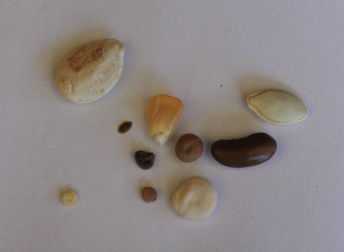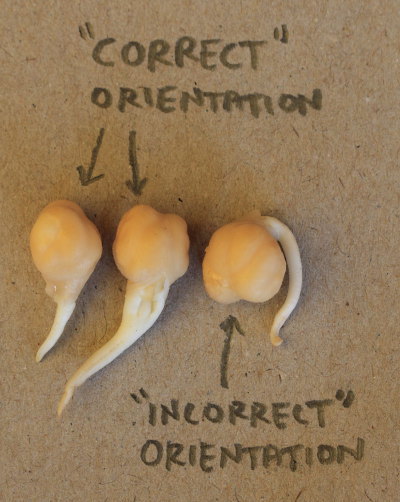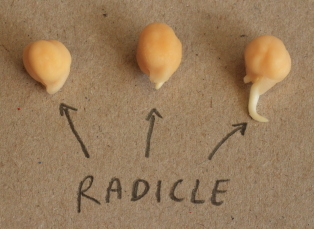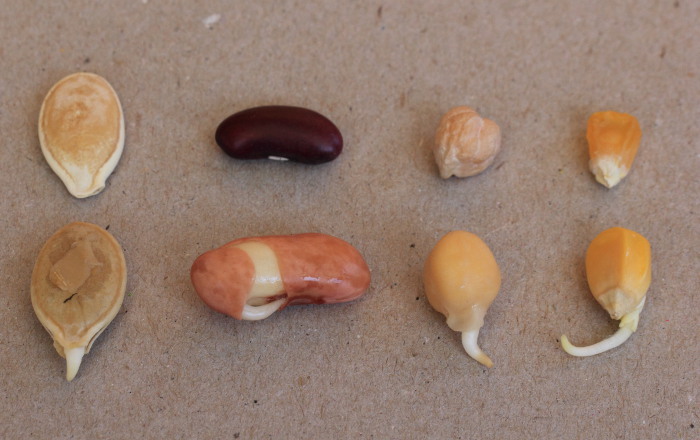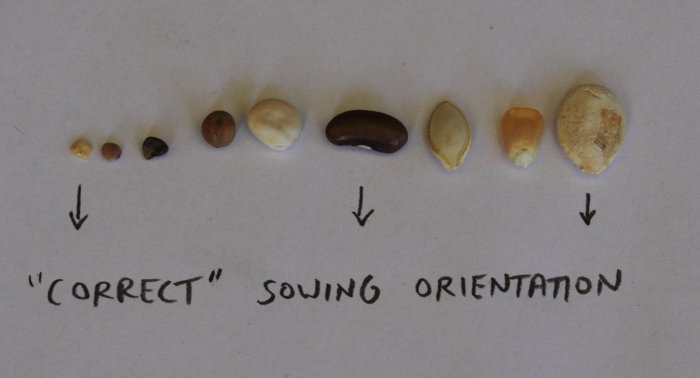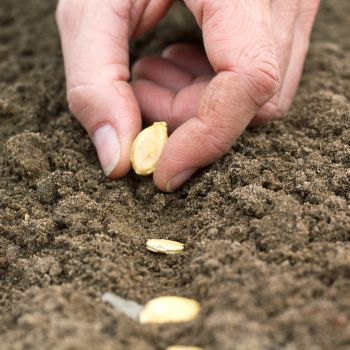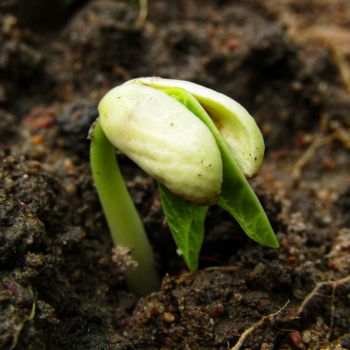I’m often posed a familiar question by eager new gardeners looking to make the most of their efforts: "Do I need to orientate my seeds when sowing?"
My answer? "No, not really." But you certainly can, and you may wish to.
When considering whether or not to use proper seed orientation it's important to understand that although most seeds do technically have a correct orientation, for most home gardeners seed orientation probably won't effect your results much either way.
Let’s take a closer look at matters, shall we?
Orientation, Geotropism, and the Radicle
As mentioned, most seeds do have a "correct" orientation, although it varies by seed type. Additionally, seeds will self-correct their own orientation regardless of how they are initially planted. Understanding how this works requires a knowledge of a couple key terms:
First, there’s geotropism. You see, seeds actually have an innate ability to re-orient themselves regardless of how they’ve been sown. They do this with the help of gravity. Roots grow naturally toward the pull of gravity, while the shoot of the plant will grow away from it. Gravity always wins out regardless of how a seed was inserted in the soil. This process/ability is called geotropism.
There’s also something called a radicle, this is the embryonic root inside the seed that will grow downward and it's the first part of the seedling that will emerge from a seed during germination. The radicle is located differently depending on the type of seed, but the important thing to remember is that if you accidentally plant a seed with its radicle facing in the "wrong" direction (upward), the stem and root will change direction naturally due to geotropism, thereby correcting the issue. This is why most home gardeners need not lose too much sleep over seed orientation when sowing. A good rule of thumb is that the radicle will normally emerge from the same side of the seed that has the seed scar (this is the scar where the seed was originally attached to the plant) and this scar should face down when sowing.
That said, this doesn’t mean there aren’t benefits to getting it technically right...
Benefits of Sowing Seeds In Their Correct Orientation
Although seeds can self-correct their orientation, there are potentially slight benefits to sowing the seed with its radicle properly pointed downward in the direction the root will naturally grow with gravity, especially when dealing with larger seeds.
Whenever a seed is forced to change direction after being sown against its natural orientation, there is some wasted energy that will never be recovered. This small handicap can delay your seedlings from emerging for a day or two. In some situations such as professional seedling production this disadvantage can be critical.
However, while there has been discussion that improper sowing orientation can decrease the vigour of a plant in more substantive ways, there is little hard evidence to support this sentiment, and even some contrary evidence. Additionally, we know for sure that small, round seeds are not substantially affected by orientation at all.
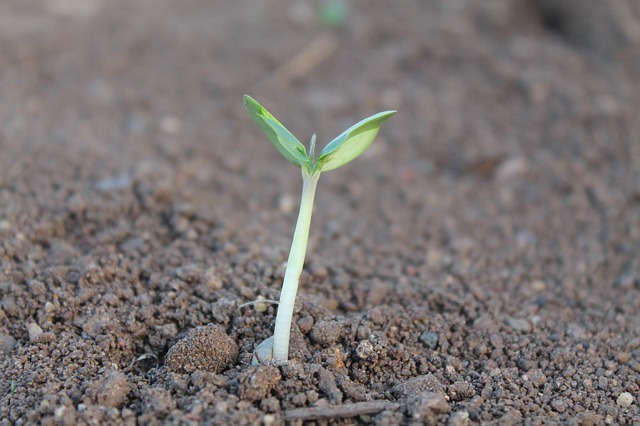
Orientation According to Seed
If you’re looking for that "head-start" with a seedling or just want some piece of mind when sowing, here’s a quick "cheat sheet" for understanding orientation by seed. This is by no means all-encompassing, but will help you get started:
Pointed seeds- The radicle is normally on(or emerges from) the tip of the seeds, so you’ll want the tip to be pointed downward when sowing. These include watermelon, squash, cucumbers, and corn seeds.
Bean seeds- The radicle emerges from the side of the seed.
Spear shaped seeds- The radicle will be located at one of the ends of the seed.
Small seeds- Small seeds are impossible to orientate with any accuracy so it's best not to worry about these, they will work things out themselves!
If you're not sure where the radicle is, a good rule of thumb is that the radicle will normally emerge from the same side of the seed that has the seed scar (this is the scar where the seed was originally attached to the plant) and this scar should face down when sowing.
So remember, sow with the radicle in mind if you’re looking for every possible advantage, but ultimately, don’t fret over it. Your seeds will figure things out on their own.


